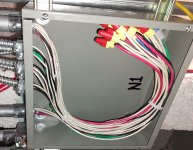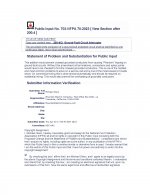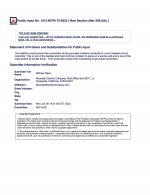mtnelect, I don't like your proposal. Crossed load side conductors on GFCI's cause trip as soon as you put them into service, something the installer should catch when testing to make sure things work.
Should not be causing service calls later on if it was caught at initial installation testing.
IMO if it were a NEC rule it is more of a "how to" rule than a rule written for safety reasons. NEC could do away with a lot of "how to" rules that IMO don't belong in there to begin with.
I don't have much issue with identifying which ungrounded conductror(s) go with which grounded conductor, but do believe there shouldn't be much limitation if any on how to go about doing so. I
I have grouped them with tape or cable ties, used markings, marker labels, would even use white with colored tracers if I had it available. In places where no inspection was to occur I maybe even marked with say red tape to go with red conductor even though some might say that is possibly confused with an attempt to identify as ungrounded, but IMO it is not. But then I am one of those that thinks marking a white conductor with colored tape (where permitted to be ungrounded) is one of the long time dumbest rules in NEC. If you can't tell a conductor landed on a breaker is ungrounded, regardless what color it is, you don't belong in the panel. Is a rule to protect the ignorant/untrained and many them still have no clue anyway.



